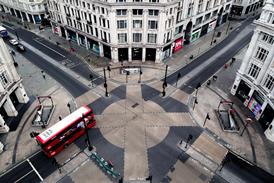Most mobile websites take more than 10 seconds to load. Isobar’s head of innovation, Alex Hamilton, explains how retailers can improve their mobile shopping experience.
Smartphones have rewired how consumers shop.
Today’s consumer craves immediate gratification to satisfy their mind. They want to find answers to questions as quickly as possible, with zero friction.
It’s vital, therefore, that retailers design faster and better web experiences for the device in their prospective customer’s hand.
Retailers are losing mobile shoppers
When I speak about the importance of site speed on mobile, it’s one of the few topics where both marketing and ecommerce teams nod in agreement.
For marketers, mobile site speed is crucial because Google now uses mobile page speed as a ranking in its mobile search results so it’s a route to drive more traffic.
For ecommerce professionals, speed is key as faster websites drive greater conversion on average.
“53% of visits to a mobile site are abandoned if it takes more than three seconds to load”
Despite the importance of mobile site speed, businesses aren’t optimising their websites for smartphones.
Today, the average mobile site takes more than 19 seconds to load after making more than 200 requests, with 77% of sites taking more than 10 seconds to load, according to Google.
The majority of visits to a mobile site (53%) are abandoned if the site takes more than three seconds to load.
The bottom line for retailers is this: mobile site speed matters.
To help retailers improve, and innovate, on mobile, I’ve outlined three approaches that will help:
1. Start fast with AMP
With data from cloud delivery platform Akamai suggesting that a one-second delay in mobile load times impacts mobile conversions by 7%, it’s important that retailer site experiences start fast on mobile.
Accelerated Mobile Pages (AMP) are increasingly being considered by retailers and brands as a means of converting Google search traffic into sales.
AMP is an open-source HTML library that allows businesses to improve their mobile experience with web pages that load pretty much instantly.
“A one-second delay in mobile load times impacts mobile conversions by 7%”
In fact, the median time it takes to load an AMP from Google Search is less than half a second.
2. Stay fast with PWA
At a recent conference I attended, there was a lot of talk around Progressive Web Apps (PWA) as the next evolution of the web.
The technology underpinning a PWA gives retailers the ability to provide consumers with a native app-like experience on the web, including push notifications and a shop-offline mode.
By caching content on a customer’s smartphone, a PWA can deliver a much faster mobile experience, without the hassle of needing to download a native app.
If retailers follow best practice for search-engine friendliness (or indexability), PWAs can also be more easily discovered by search engines – a big tick for retail marketers.
UK fashion retailer George at Asda has taken the approach of starting fast with AMP and staying fast with PWA. Learn about the results the business has achieved here.
3. Invest in headless
While AMP and PWA are tactical approaches, headless commerce is a more comprehensive approach for retailers to innovate with.
With headless, the front end (or the ‘head’) of the retailer’s website has been decoupled and separated, leaving only the back end.
The retailer’s development teams can then use application programming interfaces (APIs) to display blog posts, products or reviews on any screen or device, while front-end developers can consider how to present experiences using a framework of their choosing.
This approach allows retailers to deliver a truly customer-centric experience, at speed and scale.
Headless puts retail ecommerce professionals in the driving seat by allowing them to roll out multiple sites across brands and geographies, as well as personalised customer experiences, fast.
Headless commerce is a big topic to cover in a few paragraphs so we’ve produced a free whitepaper here to help you dive into the detail.































